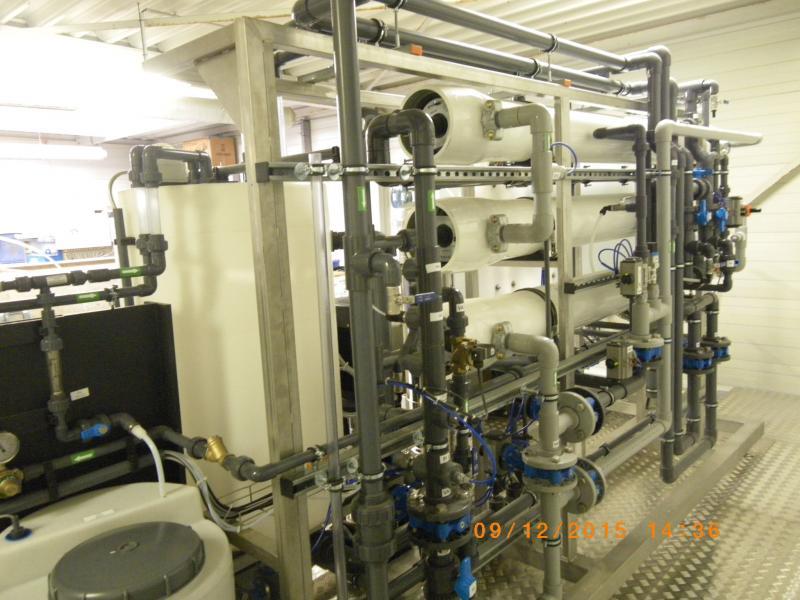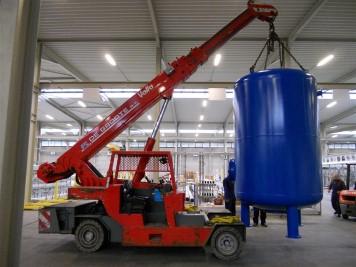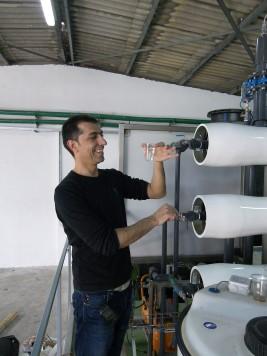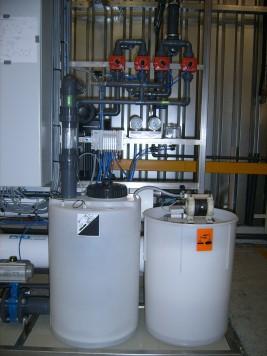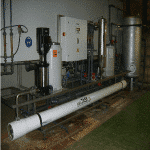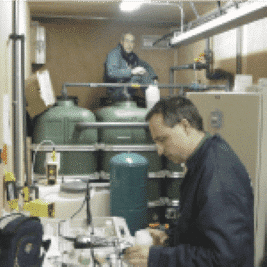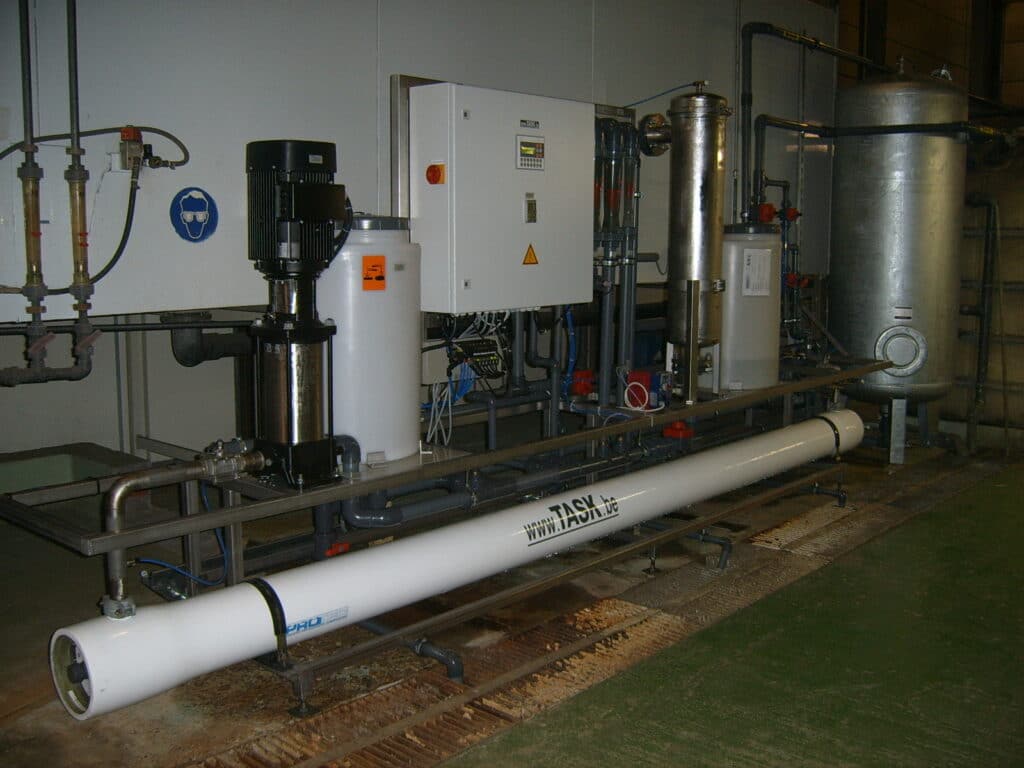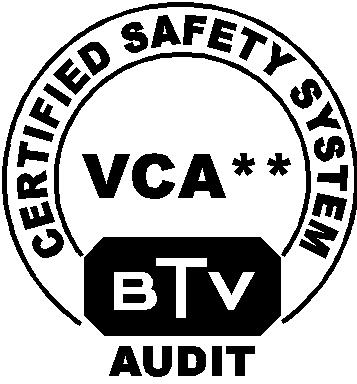Membrane filtration is often used as a post-treatment technique for effluent, usually in water recycling or water reuse. However, this technique is also often used to treat specific wastewater and process waters, such as oil emulsions.
Purification degrees
Most filtration techniques can only filter undissolved particles from water. Microfiltration and ultrafiltration can only remove suspended particles from the pretreated wastewater. Consequently, dissolved salts, dyes, metal ions (which influence the conductivity of the water) and sugars remain in the wastewater. As a result, this water cannot be reused in the production process. Only reverse osmosis (RO) allows salts, metal ions, etc. to be removed.
Reverse osmosis allows for the highest degree of purification, physically, chemically, organically and bacteriologically. In wastewater treatment, reverse osmosis technology is used for the production of ultra-pure water for industrial process water, nitrate removal, desalination of brackish and seawater, etc.
Advantages
- Reliability of the materials
- Fewer chemicals required
- Relatively easy follow-up, once the installation is up and running
- Efficient use of energy
- No phase transition or change of aggregate state required
Disadvantages
- Cost price of the membranes
- Residual concentrated retentate must be collected or treated in a next step
Application areas of membrane technology
- Oil/water separation, treatment of lypophilic substances
- Recycling of car wash water
- Treatment of slurry
- Wastewater treatment in cosmetic, food and beverage industries
- Filtration of suspended matter from waste water
- Removal of biomass
- Coolant separation
- Separation of inks for flexo printing techniques
- Reuse of process water
- Rainwater recycling
- Reuse of all kinds of effluents
- Fluid degassing
Water treatment for the reuse of process water and wastewater
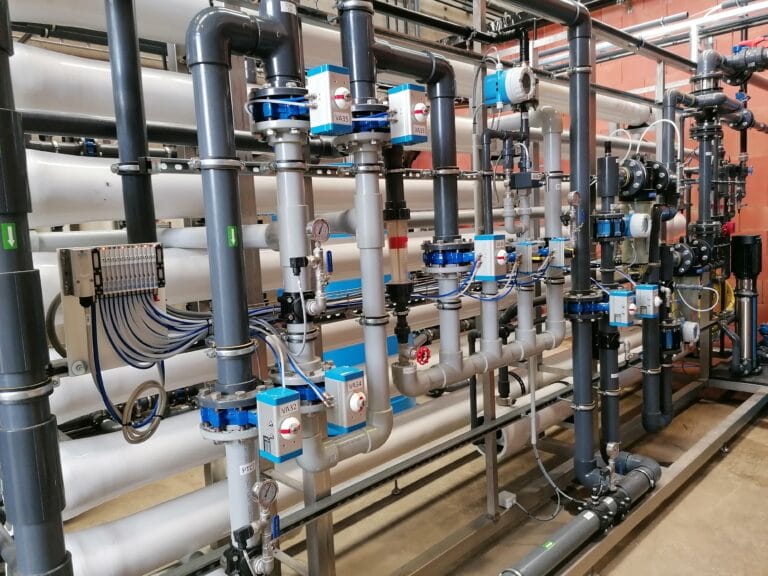
RO (reverse osmosis) units for wastewater reuse
Water is becoming more and more expensive. Companies are paying more and more for the discharge of waste water. The need for maximum reuse of these wastewaters is increasing, especially for companies where water plays a major role in the production process (slaughterhouses, laundries, cosmetics production, food and beverage industry, textiles, etc.).
An RO installation allows to reuse a substantial part of the wastewater in the production process. Your company can make considerable savings on water and discharge costs. Consequently, the investment can be recovered relatively quickly. Moreover, the operating costs are often significantly lower than the purchase price of tap water. Depending on the specific requirements of the customer, it is, for example, only one third of the purchase price of city water.
For each specific project, the feasibility is checked beforehand by means of efficiency and dimensioning tests on site. If necessary, a test installation is used. The final system is fully customized to correspond exactly to customer needs. Installations are always build in function of the type of wastewater, the intended quality for reuse and the economic aspects.
RO units are mounted on skid and offered as compact installations, easy to integrate in your existing water treatment plant. Furthermore, an RO unit is a fully automated, with remote monitoring and control.
Process water degassing – water degassing – liquid degassing
Membranes can also be used for the degassing of water and liquids. The oxygen content of various process waters can thus be reduced to ppb level. In a degassing installation, the gases dissolved in the liquid are removed from the liquid by means of so-called membrane contactors. Gases to be separated are not only oxygen but also CO2 and NH3. The degassing takes place under vacuum, with or without a stripping gas.
Liquid degassing with membranes allows for a very compact installation, without major adjustment costs and/or space requirements for the client. Considerable savings can be made on operational costs. For example, an industrial nitrogen quality can be used instead of a pure (and more expensive) version. This can save you a lot of money on annual basis!
In an industrial environment, degassing membranes are mainly used in the following applications:
- O2 removal in process water down to ppb level
- CO2 removal from various process waters
- Ammonia removal from various process waters
- Removal of gases from beverages/liquids in the food industry
- Corrosion control in industrial environments
- Controlled carbonic acid and nitrogen addition to beverages
Projects
More case study information behind each picture.

